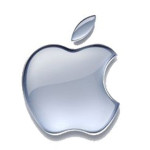Abicipar pegol
ATC Classification: S01LA07
Abicipar pegol has gained significant attention in the medical community due to its potential benefits, intended use, and possible side effects. In this blog post, we will delve into these aspects to give you a comprehensive understanding of this medication.
Abicipar pegol is a drug that falls under the category of anti-vascular endothelial growth factor (VEGF) medications. It is primarily used in the treatment of retinal conditions, specifically neovascular (wet) age-related macular degeneration (AMD). This condition is a leading cause of vision loss in individuals over the age of 50, and it occurs when abnormal blood vessels grow underneath the macula, the central part of the retina. These vessels can leak or bleed, leading to blurry vision or even vision loss.
The intended use of abicipar pegol is to inhibit the effects of VEGF, which plays a crucial role in the formation of these abnormal blood vessels. By targeting VEGF, abicipar pegol helps to reduce the growth and leakage of these vessels, thus preserving vision and improving overall eye health in patients with neovascular AMD.
One of the main benefits of abicipar pegol is its dosing schedule. Unlike other anti-VEGF medications, which typically require monthly or bi-monthly injections, abicipar pegol is administered less frequently. It is given as an intravitreal injection, which means it is injected directly into the eye, and it is typically administered every 8 to 12 weeks. This less frequent dosing may be more convenient for patients, reducing the burden of frequent doctor visits.
Moreover, studies have shown that abicipar pegol is effective in maintaining visual acuity and improving retinal anatomical outcomes. In clinical trials, patients who received abicipar pegol experienced significant visual acuity gains compared to those who received a placebo. Additionally, the structural benefits observed in these studies further support the efficacy of this medication in the treatment of neovascular AMD.
However, it is important to note that like any medication, abicipar pegol does come with potential side effects. The most commonly reported side effects include eye inflammation, eye pain, increased intraocular pressure, and floaters. These side effects are typically mild to moderate in severity and can be managed with appropriate medical care. It is crucial for patients to consult their healthcare providers if they experience any unusual symptoms after receiving abicipar pegol.
Another aspect to consider is the potential for rare but serious side effects. Endophthalmitis, a severe eye infection, has been reported in some patients receiving abicipar pegol. It is important to closely monitor for signs of infection, such as eye redness, severe eye pain, and vision changes, and seek immediate medical attention if these symptoms occur. Additionally, as with any intravitreal injection, there is a small risk of retinal detachment or tears, which can lead to vision loss if not promptly addressed.
Overall, abicipar pegol appears to be a promising treatment option for neovascular AMD, offering potential benefits in terms of efficacy and dosing convenience. However, it is important for patients to be aware of the potential side effects and to have regular follow-up visits with their ophthalmologist to ensure their eye health is closely monitored.
In conclusion, abicipar pegol is a medication that shows promise in the treatment of neovascular AMD. Its intended use in inhibiting the effects of VEGF contributes to the preservation of visual acuity and retinal health. However, it is essential for patients to understand and monitor potential side effects, both common and rare, to ensure optimal treatment outcomes. Consulting with a healthcare professional is vital in making informed decisions about the use of abicipar pegol in their specific case.




